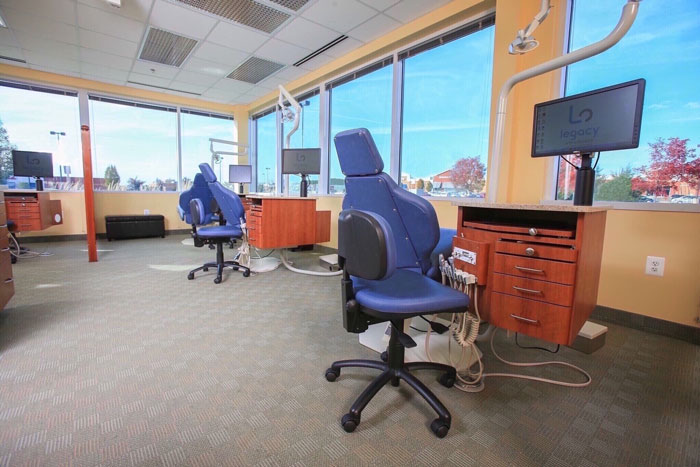Legacy Orthodontics Things To Know Before You Get This
Wiki Article
Legacy Orthodontics - The Facts
Table of ContentsThe smart Trick of Legacy Orthodontics That Nobody is DiscussingNot known Details About Legacy Orthodontics Excitement About Legacy OrthodonticsThe Main Principles Of Legacy Orthodontics Getting The Legacy Orthodontics To Work
At Advanced Orthodontics, we offer people with a alternative therapy experience. On top of that, we provide adjustable therapy schedules, adaptable settlement options and an enjoyable, pleasurable experience. leesburg braces. Call ( 480) 357-4900 today for more information and schedule a visit.An orthodontist is a dental expert educated to identify, avoid, and deal with teeth and jaw irregularities. They deal with existing problems and are trained to recognize problems that may create in the future. Orthodontists work with people of all ages, from kids to adults. Individuals typically associate a perfect smile with excellent health.
Malocclusion, or misaligned teeth, can lead to oral issues, including dental caries, gum condition, and challenging or excruciating eating. But not everybody is born with straight teeth. If you have a negative bite or huge spaces between your teeth, you might intend to speak with a dental expert focusing on orthodontic care.
Legacy Orthodontics - The Facts
( Photo Credit Score: DigitalVision/Getty Images) Orthodontists use dealt with and detachable oral gadgets, like braces, retainers, and bands, to change the setting of teeth in your mouth. Orthodontic treatment is for dental problems, including: Crooked teethBite troubles, like an overbite or an underbiteCrowded teeth or teeth that are as well far apartJaw misalignmentThe goal of orthodontic therapy is to improve your bite.A healthy bite guarantees you can consume, chew, and speak effectively. While you could consider orthodontists as primarily for youngsters or young adults that need dental braces, they can remedy oral issues at any kind of age. Orthodontists participate in college, oral institution, and orthodontic college. After graduation, they spend 2 or 3 years in an orthodontic residency program.
All orthodontists are dental professionals, but not all dental professionals are orthodontists. Orthodontic residency programs use intensive, concentrated instruction for oral specialists. They focus on 2 locations: Just how to effectively and safely move teeth Exactly how to correctly assist growth in the teeth, jaw, and faceOnce an orthodontist has finished training, they have the choice to come to be board certified.
Legacy Orthodontics for Dummies
Misalignment, or malocclusion, is the most common factor people see an orthodontist. It is hereditary and is the outcome of dimension distinctions in between the upper and lower jaw or in between the jaw and teeth. Malocclusion causes tooth overcrowding, an askew jaw, or uneven bite patterns. Malocclusion is typically treated with: Your orthodontist connects metal, ceramic, or plastic square bonds to your teeth.If you have only small malocclusion, you might have the ability to use clear braces, called aligners, rather than conventional braces (https://www.imdb.com/user/ur189155789/?ref_=nv_usr_prof_2). Some people need a headwear to aid relocate teeth into line with stress from outside the mouth. After braces or aligners, you'll require to wear a retainer. A retainer is a personalized gadget that keeps your teeth in area.
They're usually used on kids. They can create added area in the mouth without needing to draw teeth. If you have a significant underbite or overbite, you could need orthognathic surgery (likewise called orthodontic surgical procedure) to lengthen or reduce your jaw. Orthodontists make use of cables, medical screws, or plates to support your jaw bone.
You might need to see an orthodontist if you have: Crowding or otherwise enough area for all of your teethOverbite, when your top teeth come over your bottom teethUnderbite, when your bottom teeth are also much forwardSpacing or concerns with gapsCrossbite, which is when your top teeth fit behind your bottom teeth when your mouth is closedOpen bite or a vertical void in between your front base and upper teethMisplaced midline, when the center of your base and top teeth don't line up Correcting a dental malocclusion can: Make biting, chewing, and talking easierImprove the proportion of our face and your overall appearanceEase pain from temporomandibular joint disordersDifferent your teeth and make them much easier to clean, assisting prevent dental caries or dental caries It's frequently a dental practitioner that first notices misaligned teeth throughout a routine test.
The Ultimate Guide To Legacy Orthodontics

During your initial orthodontic examination, you'll likely have: An oral examPhotos taken of your face and smileDental X-raysPanoramic (360 level) X-rays you could look here of your face and headImpressions to develop molds of your teethThese examinations will assist your orthodontist recognize just how to wage your treatment. leesburg clear braces. An orthodontist is a dental professional who's had training to treat your teeth and jaw
Orthodontists may execute surgery, exams,X-rays,and more to assist you achieve a much more comfortable, much healthier smile. An orthodontist is concentrated on your bite, so something like a broken tooth would be managed by a dental expert. Orthodontists are dental experts however not all dental experts are orthodontists. Orthodontists are concentrated on your bite, or the means your teeth meshed, and the straightness of your teeth. Ever wondered just how stars always seem to have completely straightened teeth? Orthodontists are oral experts who concentrate on remedying irregularities in the teeth and jaws.
The Definitive Guide to Legacy Orthodontics

While braces are the most commonly acknowledged orthodontic treatment, orthodontists have a diverse toolkit at their disposal. The certain approach picked relies on the intensity of the situation, the patient's age, and individual choices. These reliable dental braces use a system of braces bound to the teeth and attached by cables.
Clear aligners, like Invisalign, are a prominent option for patients looking for a more discreet treatment alternative. These detachable trays are tailor-made to gradually change the teeth's placement. Headgear may be used along with braces or aligners to apply added targeted forces, specifically for dealing with jaw discrepancies. In instances of narrow jaws, palatal expanders can be used to create space for appropriate tooth placement.
Report this wiki page